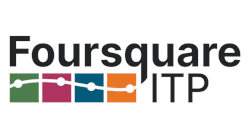Bismarck, N.D.
Kalen Ost, Marketing Director/Mobility Manager
Bis-Man Transit/Capital Area Transit
We have tried to cast a wide net with our efforts to connect with our current and potential audience. In covering a variety of mediums, we are trying to not only educate the community about specific services/promotions, but to also create the opportunity for our customers to come to us with inquiries and/or potential problems or solutions. As an example, in September we altered a route to enter one of the college campuses in our town, and this change coincided with an addition to our discounted rate to include college students. We were able to reach students/faculty through a number of avenues, creating multiple channels of interaction during the addition of service, as well as afterward, to make sure the service continued to be something beneficial to the campus, and our customers utilizing the service:
- Web site – Our site serves as the information hub for our organizational news, route changes, and new services alerts, as well as serving as the 24/7/365 electronic face of the organization. Within the site, there are ways for the public to contact us – a contact form for general inquiries, a form to generate help in finding the fastest/easiest route between two points, and staff email and phone contact information. We have pages dedicated to specific services, as well as a newsfeed on the site homepage, and a rotating carousel that primarily serves to highlight specific services/promotions.
- Social Media – We are active with Facebook, Twitter, and YouTube accounts, as well as through a quarterly E-Newsletter. Facebook, Twitter, and the E-Newsletter are primarily used as a tool for brand awareness and news dissemination, while YouTube is primarily used to house our video series on how to ride the system.
- Press Releases – We email our releases to a variety of media outlets (Television, Radio, Print) in the area. The releases are also featured on our web site, and pushed through social media channels.
- Advertising – Money for radio and TV ads is traded with providers through options such as bus wraps. These trades provide us with money to run a year-round branding campaign, with some flexibility to highlight specific events each year.
- Flyers – These pieces are printed in-house and distributed to areas that will reach specific demographics of customers (for example, at a college’s student/wellness center). Flyers are also posted on buses and put up in our office.
- Cooperation – The college purchased a number of tickets to give to students/staff for those groups’ initial rides. The college had sent over a request for the tickets at the previous rate, and we contacted them and let them know about our new college student rate, resulting in more tickets available for those students.
- Mobility Management – Staff is made available for public trainings on how to determine which bus system (we utilize both a door-to-door and fixed-route system) would serve their needs and how to go about utilizing those services.
Rockville, Md
Michael Weinberger, Transit Planner
Foursquare ITP
Public outreach is more than a required part of the planning process; it is an opportunity to better understand how transit systems impact the communities that they serve and a key source of data that transit planners use to make decisions. Foursquare Integrated Transportation Planning (Foursquare ITP) works with transit agencies to conduct service planning efforts, a process which includes the development of a robust and inclusive public outreach process, such as in its recent work developing comprehensive transit service plans for Maryland MTA in Baltimore and for bus service in Fairfax County, VA. In each of these efforts, one or more of the following engagement methods have utilized, all of which have resulted in genuine dialogue and feedback that has been invaluable to the planning process.
Interactive Public Workshops
Instead of standard town hall style meetings that can result in people talking at each other instead of listening, interactive workshops can be developed to educate, inform, and include the public. Armed with information regarding the project purpose and the relevant data, workshop participants are encouraged to engage in activities such as ranking or indicating their transit preferences. Depending on the stage of the project, participants should be encouraged to either envision the type of transit service they would like or review recommendations that have been developed based on data analysis and public feedback.
Pop-Ups
“Pop-up” events meet the public where they are, such as bus stops or rail stations and at festivals and shopping centers. This includes engaging the public with a visible presence through branded outreach materials and informational boards that can provide details of the project. Staff can also be equipped with mobile tablets loaded with digital surveys to promote the project and collect a significant amount of participant feedback. Pop-up events attract participants who often would not otherwise contribute, including non-transit riders, low-income and minority communities, and those with language access barriers. Small giveaways for participating and children’s activities can be used to encourage feedback.
Online Crowdsourcing
Increasingly, community members are logging in online to voice their opinions about transit service. Harnessing this energy through a crowdsourcing website is convenient for many participants and allows transit agencies to interact and pose questions, display images and engage people in short polls and stated preference activities.
Community-Based Meetings
When a transit agency partners with a community group, faith-based organization, or social service agency, it can obtain feedback from a diverse audience through facilitated discussions sanctioned by organizations that people trust. These discussions can either be led by transit agency representatives or by community leaders as a way of community empowerment. These informal discussion sessions are a great way of receiving input from underrepresented populations.
Overall, the public outreach process is a great way to gain feedback and collect useful planning data. It should however be just one component in an on-going conversation between transit agencies and the public. Developing and implementing a public outreach program can also be fun and creative, reflecting the unique character of your community.




